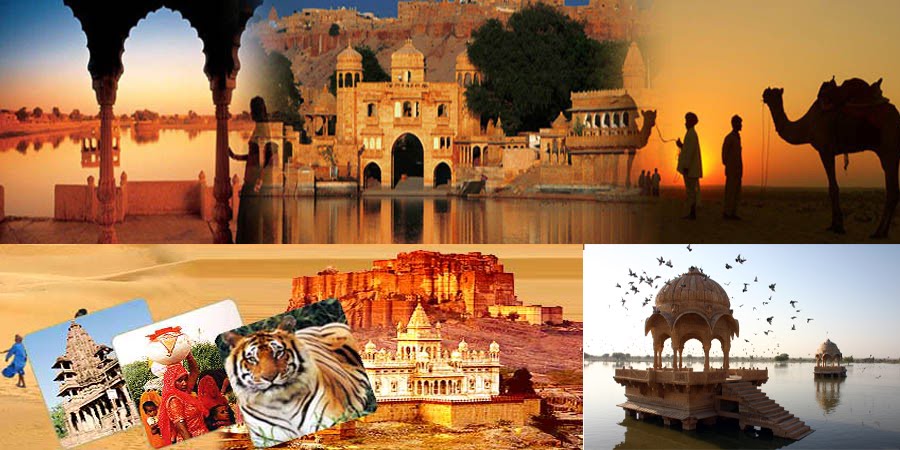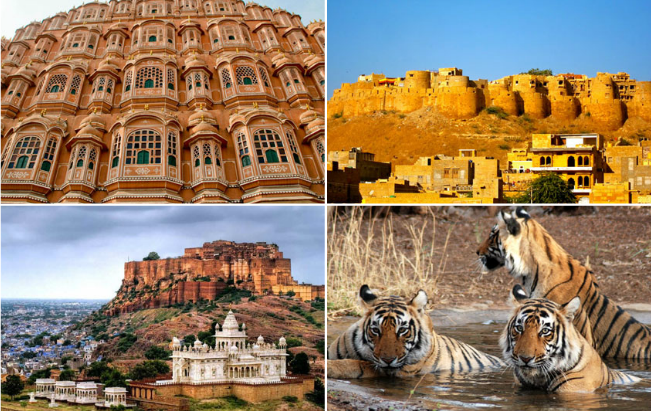Dehradun
Dehradun is the capital city the recently
formed state Uttaranchal. It is one of the oldest cities in India. Myths and
legends still do rounds in this land. You also avail references of Dehradun even in the scriptures of the Ramayana and the Mahabharata.
A travel to Dehradun would take you to a land
where some of the premier educational institutes are located. But there are
many tourist attractions too in Dehradun. The mountainous beauty complete with
lofty hills, wooded valleys, highland streams, caves and a temperate climate is
an abiding lure for traveling to Dehradun.
Pay a visit to Tapkeshawar Temple,
Sahastradhara, Tapowan, Forest Research Institute, Wadia Institute of Himalayan
Geology in your travel to Dehradun.
If you have a penchant for wild lives, head
for Rajaji national Park as you travel to Dehradun. Myriad number of wild flora
and fauna would charm you
for sure. Another reason to travel toDehradun is that the city serves as the gateway to reach the several touristattractions in the Garhwal Himalayan region.
Nainital
Famously referred to as the ‘Lake District ofIndia’, Nainital, at 1938 meters above sea level, is a scenic delight that
would be irresistible to any tourist. It is located around the famous NainiLake in a valley. With mountains on all sides, Nainital is where you need to be
for a rendezvous with nature.
The sheer appeal of the eye-shaped Naini Lake is simply enchanting, be it in
days when boating goes on in full swing, or at nights when its bank is lit by
numerous lights highlighting border. The sound of Naina Devi Temple bells are
enough to guide anyone looking for direction. From here, most of the tourists
embark on their journey to learn more about this once British occupied capital.
If plans extend to nearby places, people busy in arranging fields for terrace
farming meticulously could be seen in Ranikhet. Not every day one can view such
hard work of human.
Legends tell about the eyes of Goddess Sati dropping where Naini Lake stands
today while Lord Shiva was carrying Her body and grieving; the goddess who
represents Shakti is worshipped in the temple located at northern shore of the
lake. This is just a single myth; there are many other popular stories that
could be heard once plans of Nainital tour are in place. The calm and cool
environment is salubrious, healing soul just as the faith healing mind.
The credit to raise a city around an ethereal lake goes to British. P. Barron,
a Sugar trader. He is associated with the founding of the place in 1841, but
since then people (residents as well as tourists) know it to be a speck of
divine in more than one way.
Rituals, celebration, myths, faith, devotion, romance- Nainital tourism has
many faces. Depending upon what inspires more a tourist, the place garbs itself
in a perfect host. Bound by the beautiful peaks, lush greenery, valleys and
Ballia River, the city is unscrupulous in providing soul rejuvenating
experience. Ride a boat in the lake and the feeling comes stronger than ever.
Deciding to spend holidays in Nainital can leave tickles in memories for life.
Mussoorie
Mussoorie, Popularly known as the Queen of
Hills, this charming hill station, 34 kms from Dehradun is situated at an
altitude of 2003 mts in the Garhwal hills. above sea-level. Mussoorie is one
the beautiful hill stations in India and the most frequently visited. It
provides excellent respite to people who want relief from the hot sultry
conditions of the plains, especially since it is close enough to the capital to
make just weekend trip. Also, major Hindu pilgrimage sites like Kedarnath,
Badrinath, Gangotri, Yamunotri, Haridwar, Rishikesh are not far from this
place.
In 1820, Captain Young of the British army
was influenced by the beauty of this place and made it his residence. The name,
Mussoorie is derived from plants of 'Mussoorie' which were found in abundance
here. After its discovery, this hill station gradually developed as a centre of
education, business, tourism and beauty.
Rishikesh
Rishikesh is town in the Dehradun District of
Uttarakhand state in India. Total population of Rishikesh is 75,020 (53% male
and 47 % female) as of 2001. Rishikesh is situated at 409 meters above sea
level in the foothills of Garhwal Himalayan Range and surrounded by the
Shivalik range. Rishikesh is 35 kms far from Haridwar, 90 Kms from Mussoorie,
25 Kms far from Jollygrant airport Dehradun, and 240 kms far from New Delhi.
Rishikesh has spectacular view of jungle-clad hills. Rishikesh has also
confluence of River Ganges and Chandrabhaga. The glorious attraction ofRishikesh is none other than the great river Ganges herself, running rapidly
throughout the city. In the ancient time and still so many yogis, rishis, sages
and sannyasis attracted to Rishikesh to practice yoga in this peaceful
location. Since then, Rishikesh has known as an abode of sages. Rishikesh is aholy town with so many Ashrams and it is famous for the yoga world wide.
Rishikesh is now world famous as a Yoga Capital of the world. Every year during
the March month one week long International yoga festival is hosted by
Rishikesh.
Rishikesh is also known as gateway to the Char Dham. Char Dham is four popular
holy temples on the hills (Kedarnath, Badrinath, Gangotri, and Yamunotri)
Thousands of people attracted every year to Rishikesh for spiritual relief,
peace, learn yoga, adventure and to take a dip for salvation. The famous among
them were Beatles, Kate Winslet and many more others celebrities. It is
believed that by meditation in Rishikesh one can get "Moksha"
(liberation from the cycle of death and rebirth) as well as holy dip in the
river Ganges.
Apart from spirituality now Rishikesh is also hub for the adventure activities
such as rafting, camping, trekking and bungee jumping. Rishikesh is full of
tourist every time. There are also big ashrams, centers for Yoga, Meditation,
Ayurvedic Massage and astrology are here. Rishikesh is also known as the white
water rafting capital of India
Haridwar
Haridwar is a highly revered city in the
state of Uttarakhand. The holy town is a major attraction for the pilgrimsaround the world. The city has a very rich popularity among the pilgrimage destinations. The Haridwar city is also known as the "Gateway to theLord". The word Haridwar is combined of two words 'Hari' stands for Lord
and 'dwar' stands for gate. That is why this sacred site is famous as
"Gateway to the Lord". This worthy place is located on the bank of
sacred river Ganga. There are many shrines, temples and ashrams to offer the
prayer and for pilgrimage. This is a hustling site with crowded markets.
Haridwar is the Gateway of Chardham yatra too. People from all over the worldvisit the devoted site every year to perform the Chardham yatra. The Chardham
yatra adds Yamunotri, Gangotri, Badrinath and Kedarnath the sacred destinationsof devotion. According to the Hindu mythology it is said that the religious
professionals named this holy site Haridwar. The city also very popular for the
well known fair Kumbh Mela that happening once after every 12 years and Ardha
Kumbh Mela after six years. Countless people take a part in this Mela.
Different types of stalls and shops having religious aspects are the major
attractions for the pilgrims. At a distance of 10 kilometer there is a 'RajajiNational Park" great for wild life lovers.
The place Haridwar occupies an area of 12 sq. kilo meter and elevated 2927
meters high above the sea level. And the Haridwar district capture an area of
2360 sq. kilo meter, located at the Northern India. Rishies, pundits, men, women
and sages comes to Haridwar to take a holy dip into the holy River Ganga. In
Hindu mythos the most Sacred River Ganga has a rich status for the Hindus or
devotees. The place is also very famous for arts, science and culture. There
are many institutions of arts, science and culture, student reach here and take
admission to learn these. Rishikesh, Dehradun and Mussoorie are great tourist
attraction. Tourist comes here every year to spend their holiday vacation here
during September to June.
Kedarnath
Kedarnath, nestled around 221 km from
Rishikesh, is one of the twelve Jyotirlinga’s of Lord Shiva. Lying against the
backdrop of the magnificent Kedarnath range, at an altitude of 3,580 m, the
splendid Kedarnath temple is enveloped by the imposing snow draped peaks. The
temple was constructed by Adi Shankaracharya in the 8th century A.D. The
cascading Mandakini River and the images of verdant landscapes and snow draped
Himalayas make Kedarnath a tranquil place.
The devotees can experience a great peace of
mind and undertaking a spiritual trip here always rekindles human beings faith
in the almighty. Devotees flock to this holy pilgrimage site every year.
Kedarnath in Uttarakhand is one of the most prominent sacred pilgrimages,
particularly for the Hindus. The temple opens its gates for the visitors in the
first week of May on the eve of Akshaya Tritiya and shuts down in the month of
October-November. Gandhi Sarovar, Vasuki Tal, Gaurikund, Sonprayag,
Triyuginarayan, Agastyamuni Temple and Deoria Tal are some of the memorable
sites around Kedarnath.
Badrinath
One of the famous sites of the Chardham
Yatra, the Badrinath Dham has allured tremendous devotees to the joyous Chamoli
district of Uttarakhand. The most exemplar value of humanity and mankind, the
Badrinath Yatra is simply manifested for the welfare of humanity and for the
sake of tremendous devotees to bring salvation and redemption from sufferings.
The ancient mythology depicts the value of the Badrinath Mandir with the legend
of meditation of Lord Vishnu for complete 1000 years under a Badri Tree for the
welfare of humanity and since then the location is considered sacred by
establishing the shrine of Lord Badrinath in the meditative pose; and to
spellbound tremendous devotees, there are other captivating images and idols of
Lord Vishnu.
The one meter tall Lord Vishnu’s imposing structure lying amidst the NarNarayan temple with its three sacred sections including the Garbhagriha,
Sabha-Mandap and Darshan-Mandap is the reason for the fame of whole the Chamoli
district. Along with the shrine of Badrinath temple, there are other
fascinations that captivate people for thronging across the holy destination
and that include Tapt Kund and Surya Kund and famous Panch Badri.
Almora
Almora is a wonderful place to conveniently
enjoy the spectacular snowscape of the central Himalayas. Most of the days in
Almora are flawless. Almost everyday the tourist can see almost every peak.
Almora allows you to enjoy the mighty Himalayas together with ridge after ridge
of hills.The terraced fields, the stone slatted barrack-like village houses
have so far put up a valiant fight against the encroachments of urban expansion
and unplanned development. Bageshwar and Sitalakhet are other places of tourist
interest. Bageshwar is one of the main camping sites for the journey to PindariGlacier, which is situated at a height of 3,820 meters. Sitlakhet is the new
tourist resort on the Syahi Devi hill. Kafni Glacier is also close by(around 3,870
meters above sea level).
On the banks of Gomti (a local river)
Baijnath is situated in Garur Valley, is an idyllic place. It is famous for its
13th century temples. Jageshwar has Shiva temples and is on the
Almora-Pithoragarh road and is situated in a densely wooded beautiful narrowvalley.They are a marvel to see for their artistic beauty and craftsmanship.
Jageshwar is among the 12-jyotir lingas in the country.
The Nanda Devi temple in the heart of theAlmora city is very famous. Almora has a museum that is a storehouse of
information about the cultural heritage of Kumaon. There is a deer park on the
outskirts of Almora.
Almora was founded in 1568. There are lots of
attractions at Almora. Swami Vivekananda gave famous lectures here and included
it in his itinerary at the turn of this century. From Almora To Colombo record
that he was stirred as much by the stark beauty of the mountains here as by the
ocean at Kanyakumari. The headquarters of the Ramakrishna Mission, was located
at Mayawati Ashram then in Almora. Gurudev Rabindranath Tagore spent a summer
to get over the personal grief after the loss of a beloved child.A little later
followed the great dancer Udaya Shankar. Ravi Shankar, Zohra Sehgal, Simki and
the youngster Guru Dutt have all been here. Others have followed in their
footsteps.Pundit Nehru had served a term of imprisonment in the Jail at Almora
and has left behind an evocative account of the pleasures of solitude and the
changing moods of nature in his various letters written from this place which
acted as inspirational guide for the Indians.































